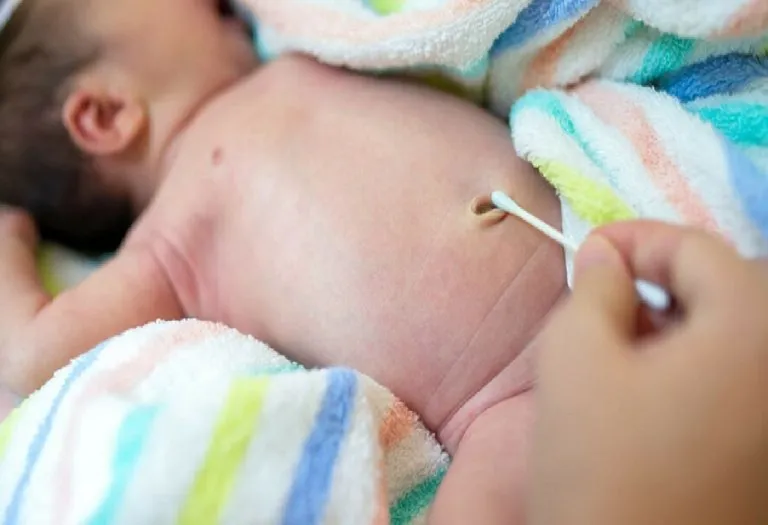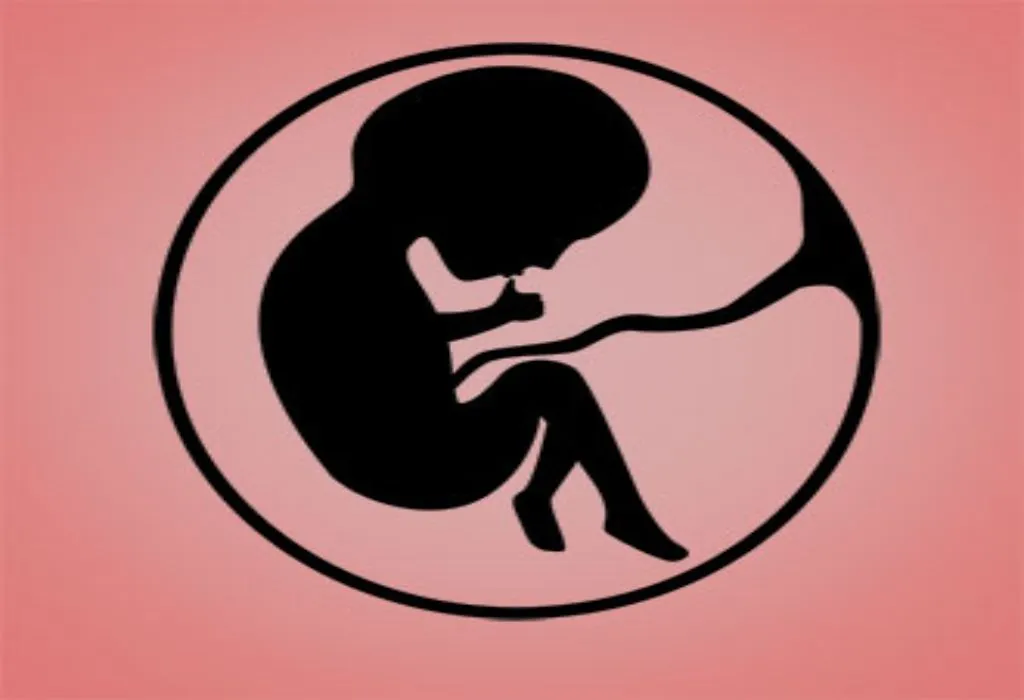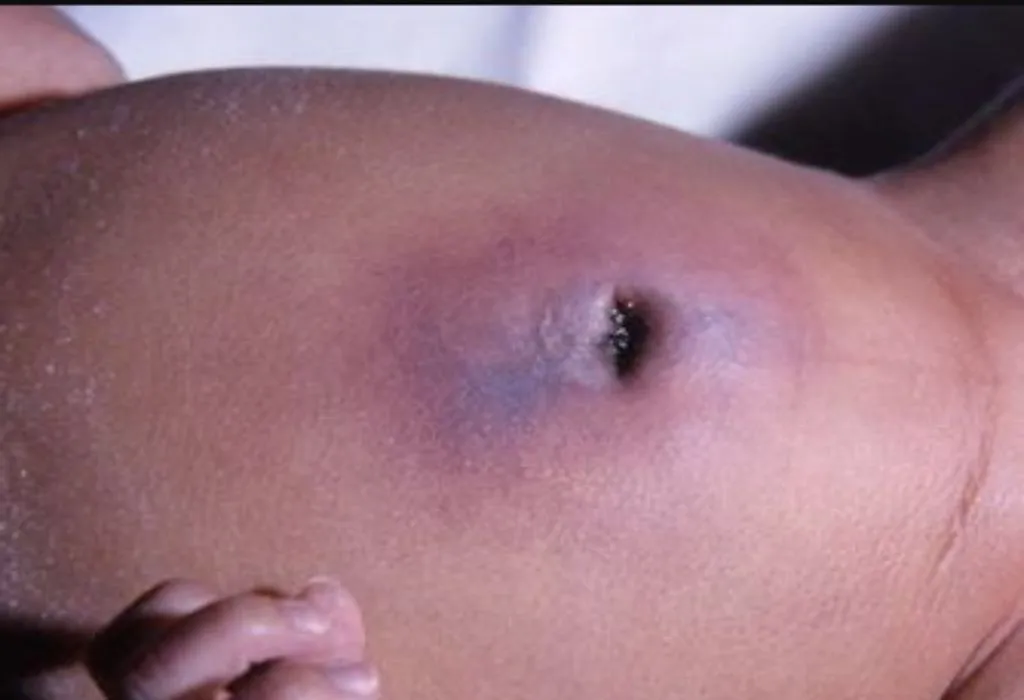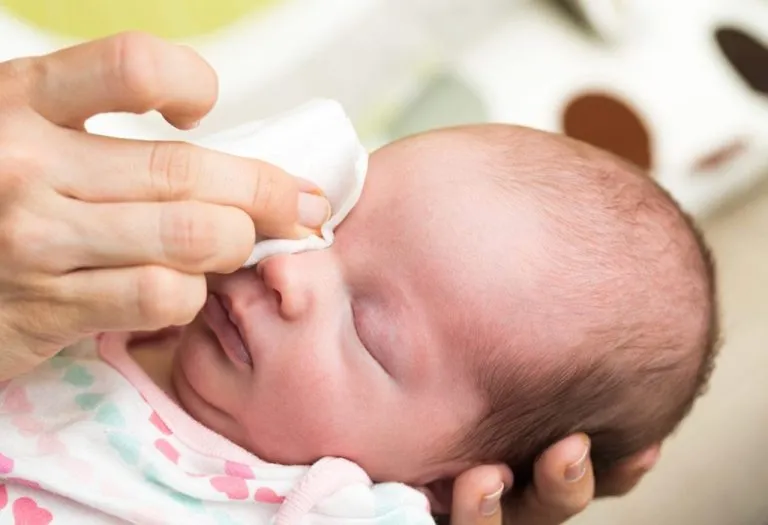Omphalitis – Causes, Symptoms and Treatment
Omphalitis is an infection in a baby’s belly button. Though an umbilical infection can be treated with medicines, it’s vital to spot the early signs and symptoms and prevent it from becoming a serious infection.
Omphalitis is commonly known as belly-button infection. Though it is relatively rare, every 2-5 infants in a hundred may suffer from this painful infection after birth. It can even become a medical emergency and lead to hospitalization for a few days. Since babies have a weak immune system, they are quite susceptible to postnatal infections.
Thanks to rapidly advancing medical science and health care, babies are administered anti-infection remedies right after birth in order to protect them against various infections. However, as some babies may still suffer from Omphalitis, it is important for you, as a new parent, to have an idea of what type of infection it is and whether your baby could be at risk.
What is Omphalitis and Could Your Baby be at Risk?
The major cause of Omphalitis is exposure to bacteria like tetanus, strep and staph. This happens mainly during delivery while the doctor incises the umbilical cord. This infection mainly targets newborns, whose immunity powers are considerably low. It may attack a baby a few days after the delivery. Unfortunately, it may not be seen from outside during the neonatal days. Some common signs of infection like redness and pus, three to five days after birth, make this infection prominent.
Research on Omphalitis reveals that premature and underweight babies have a greater risk of this infection. These babies have a relatively weaker immune system and easily fall prey to such post-birth infections.
Symptoms of Omphalitis
A belly button is a conspicuous body part, it would be hard to not notice if something were wrong with it. Nevertheless, here are some common symptoms of omphalitis.
- General discoloration around the umbilical cord, which may make the baby uncomfortable. This usually occurs within the first few days of birth
- Inflamed belly button
- Pus or a fluid-filled lump around the umbilical area that leads to a reddish stump which darkens as the case gets worse
- The little one suffers from extreme fever
- There is abdominal swelling that can cause discomfort
- The infected baby belly button discharges a foul-smelling liquid
- There is bleeding around the stump
- Baby feels irritated and suffers from lethargy
- The activity of baby reduces a lot; you often find it hard to feed him as he is always uncomfortable
How to Prevent Omphalitis?
Here are the best preventive measures to protect your baby from infant belly button infection:
1. Breastfeed
Breast milk has antibodies that can protect your baby from various diseases including omphalitis. It also protects against diarrhoea and hypothermia. According to a survey conducted by Medela India during the National Nutrition Week 2017, the “first feed post birth acts as a shield against a host of fatal diseases and impacts the intelligence of the child positively”
2. Umbilical Cord Hygiene
You need to keep the area around the cord clean and dry using a swab/soft gauze. The World Health Organization recommend the “dry method” of umbilical cord care. The dry method means avoiding using any ointments or lotions and leaving the area exposed to air
3. No Tub Baths
Try to avoid tub baths for your baby till the stump falls off. This will keep the area dry and reduce the chances of infection.
Key Takeaways:
- Your baby’s belly button needs extremely gentle care in the first few days after birth.
- To prevent omphalitis, keep the area clean and avoid covering it with diapers, shirts, etc.
- If the belly button looks unclean or infected, discuss with your doctor and use a Q-tip dipped in rubbing alcohol to gently clean it.
Treatment of Belly-Button Infection
In case you observe any signs of infection in your baby’s belly button, ensure you seek treatment of Omphalitis without delay. If delayed, this infection may bring forth other medical emergencies. Therefore, you should not delay consulting a physician when you observe any of the above symptoms in your child.
Your doctor may prescribe antibiotics or other medicines and even surgical intervention when normal medicines do not work. If the infection is serious, the baby may need to be hospitalised for further treatment.
Home Care in Case of Omphalitis
While medication is a major part of treating omphalitis – or any kind of infection or disease for that matter – there are peripheral things you need to take care of too, to speed-up recovery. Here are a few tips in that direction.
1. Keep the Area Clean
Make sure to clean the area that joins the umbilical cord to the baby’s skin. Clean the umbilical stump at least one to three times in a day.
2. Use an Alcohol Swab if Advised by the Paediatrician
You can use an alcohol swab and then dry the area after cleaning. However, please do this only after consulting your paediatrician as some experts are of the opinion that rubbing alcohol can delay healing. Also, applying the wrong solution/lotion for belly button cleaning can have side effects on your baby’s skin.
3. Keep the Area Exposed
Avoid covering the stump area with a baby diaper. Do not keep any buttons, bandages, adhesives, etc., in this area.
If your home care is not working fine or the medication is not working properly, make sure you seek expert help immediately. Newborn belly button infection can become serious very quickly and needs to be treated as soon as possible.
Also Read:
Umbilical Cord Care
Outie Belly Button in Newborn
Umbilical Granuloma In Babies
Was This Article Helpful?
Parenting is a huge responsibility, for you as a caregiver, but also for us as a parenting content platform. We understand that and take our responsibility of creating credible content seriously. FirstCry Parenting articles are written and published only after extensive research using factually sound references to deliver quality content that is accurate, validated by experts, and completely reliable. To understand how we go about creating content that is credible, read our editorial policy here.
























